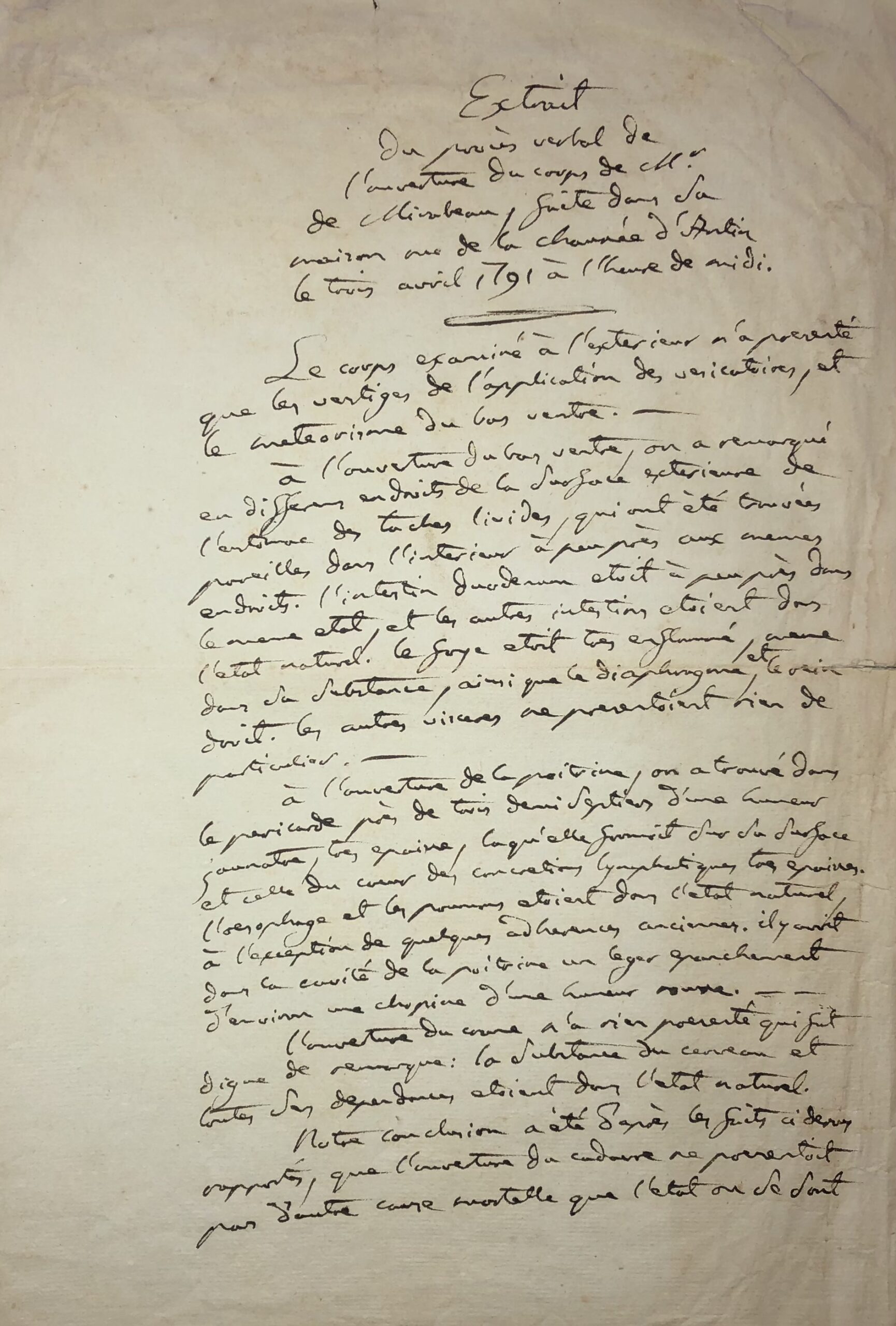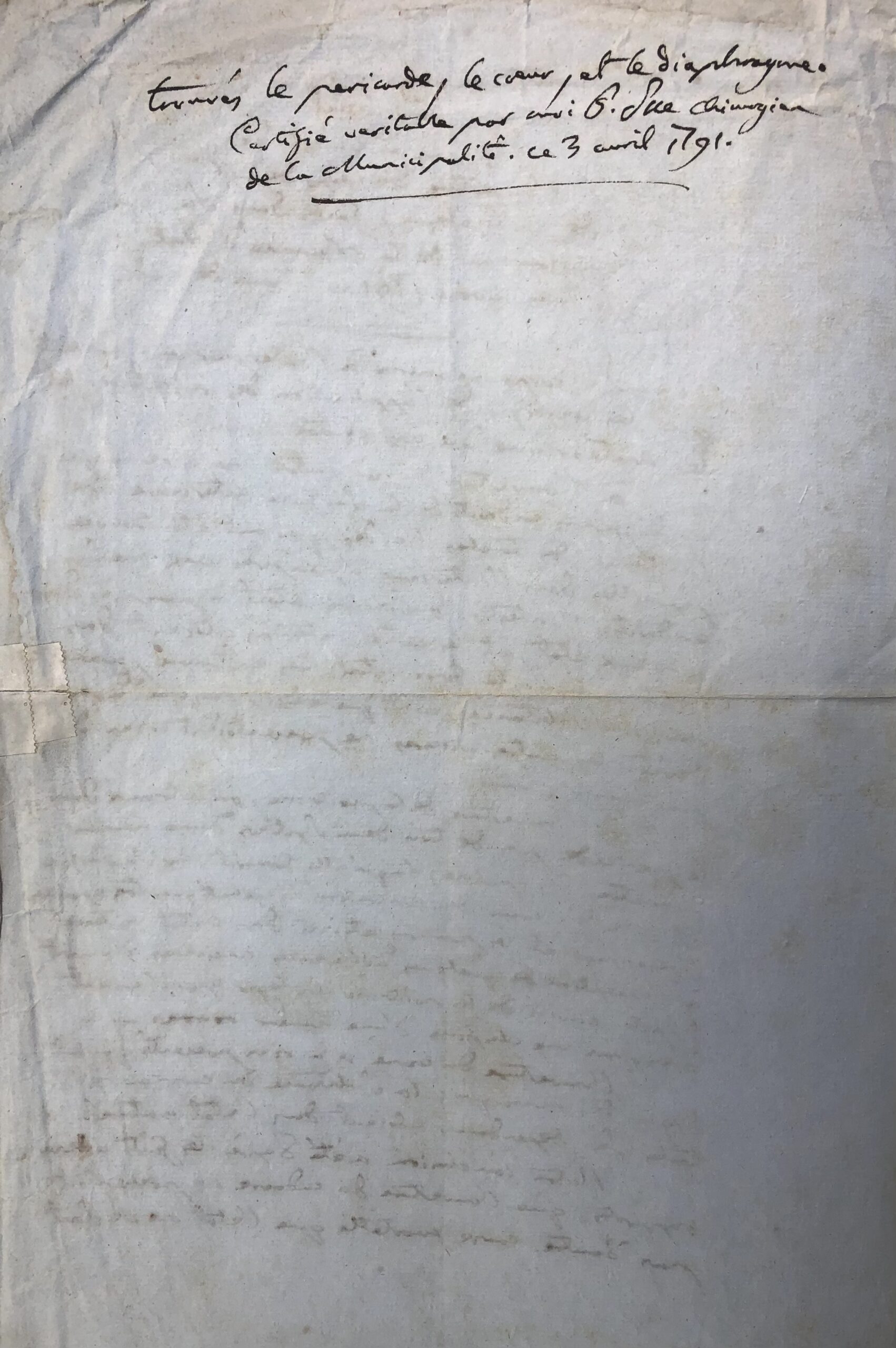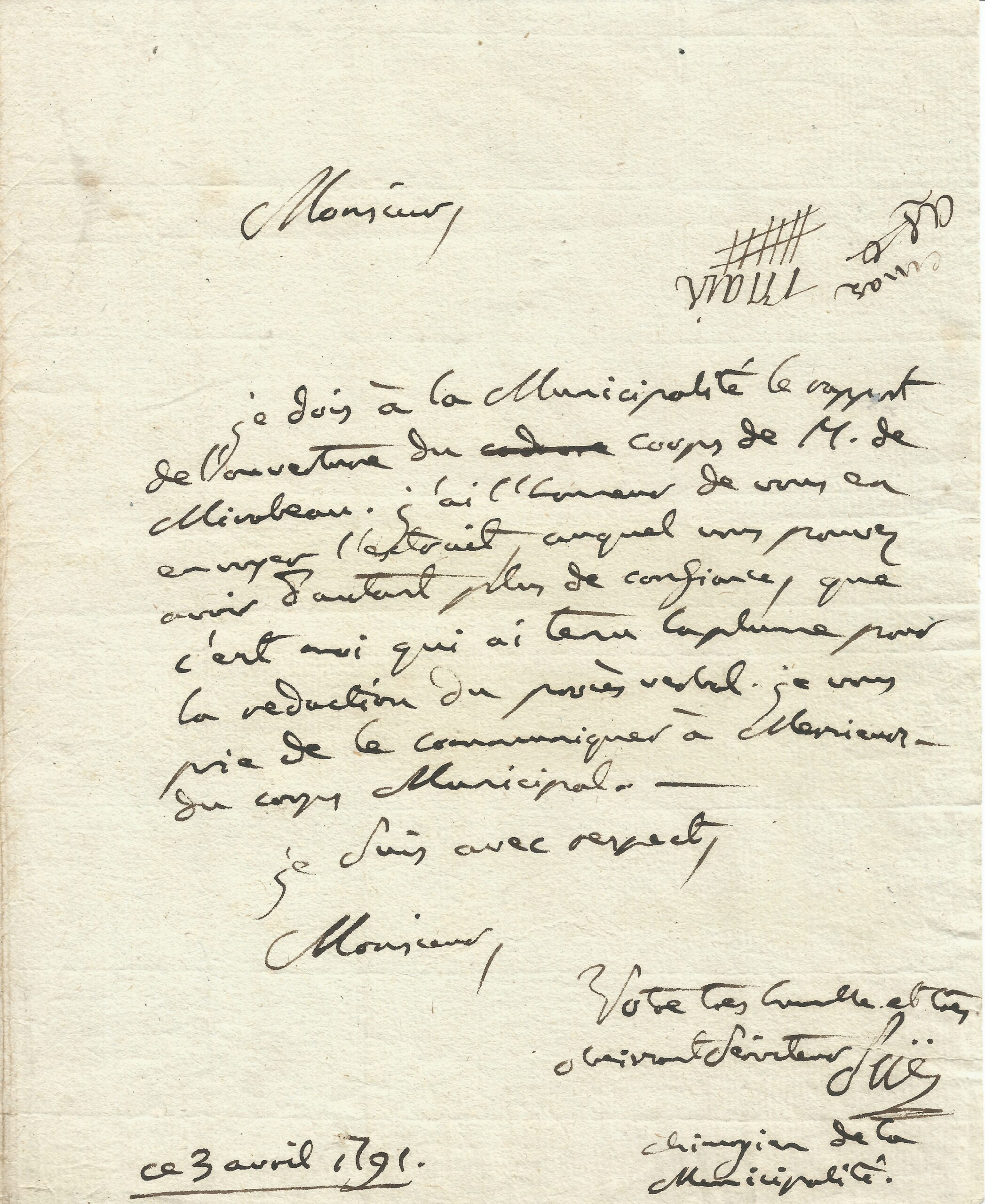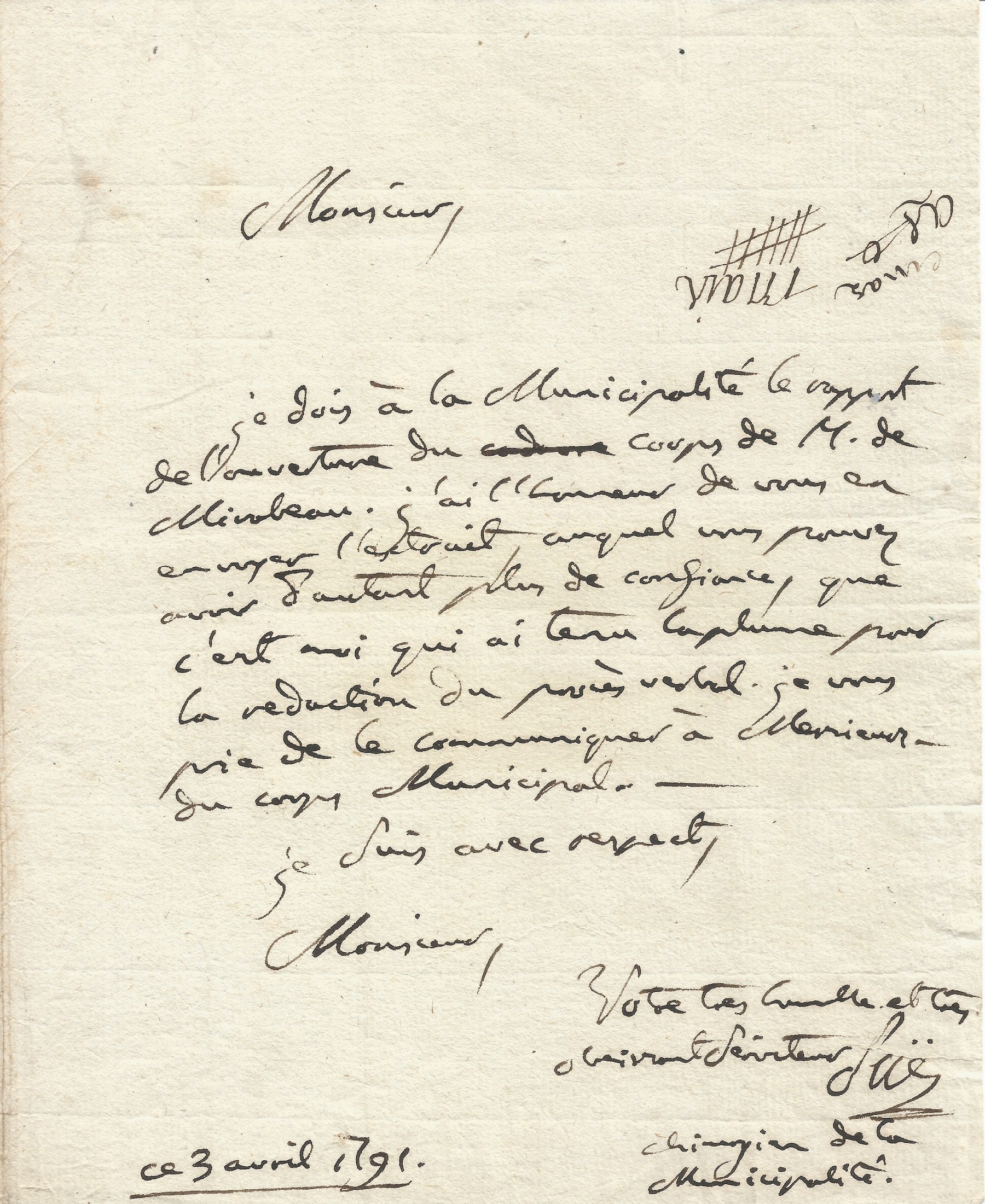Pierre SUE (1739- 1816)
" The opening of Mirabeau's body. »
Signed autograph letter and signed autograph report.
A ¼ large folio page and a quarto page.
Some defects on the margins.
Paris. April 3, 1791
Precious and fascinating autopsy report on Mirabeau carried out at the home of the People's Speaker, the day after his death.
___________________________________
“Sir, I owe the Municipality the report on the opening of the body of Mr. de Mirabeau. I have the honor to send you the extract in which you can have all the more confidence, since it was I who held the pen for the drafting of the minutes. Please communicate it to the gentlemen of the Municipal body. I am with respect, Sir, your very humble and very obedient servant. Sue, Municipal Surgeon. This April 3, 1791.”
___________________________________
Extract from the report of the opening of the body of Mr. de Mirabeau, made in his house rue de la Chaussée d'Antin, on April 3, 1791 at noon.
The body examined externally showed only the vestiges of the application of blisters and meteorism of the lower abdomen. When the lower abdomen was opened, livid spots were noticed in different places on the exterior surface of the stomach, which were found similar in the interior in approximately the same places.
The duodenum intestine was in almost the same condition, and the other intestines were in the natural state. The liver was very inflamed, even in its substance, as well as the diaphragm and the right kidney. The other viscera presented nothing particular.
When the chest was opened, nearly three half-septiers of a very thick yellowish humor were found in the pericardium, which formed very thick lymphatic concretions on its surface and that of the heart.
The esophagus and lungs were in their natural state, with the exception of some old adhesions. There was a slight effusion of about a pint of red humor in the cavity of the chest.
The opening of the skull presented nothing worthy of remark: the substance of the brain and all its dependencies were in the natural state.
Our conclusion was based on the facts reported above, that the opening of the corpse presented no other fatal cause than the state in which the pericardium, the heart, and the diaphragm were found.
Certified true by me P. Sue, surgeon of the Municipality this April 3, 1791.
___________________________________
On Saturday April 2, 1791, around ten o'clock in the morning, Gabriel-Honoré Riqueti, Count of Mirabeau, died at his home, 42, rue de la Chaussée d'Antin.
Mirabeau's death led to a real media and social battle. On the one hand, the counter-revolutionary press had an interest in spreading a shameful version of Mirabeau's death (due to the debauchery of an entire life, crowned by an orgy on the eve of the crisis which would have taken him away); on the other, the radical press spread the version of the plot and the poisoning, with which Mirabeau's secretary was accused, according to material evidence.
The deceased's family and public opinion demanded an autopsy. This was instantly provoked by an indictment from the public prosecutor of the 1st arrondissement of Paris: “The body was opened the next day, Sunday around noon, in the presence of a very considerable number of doctors and surgeons. Several of them demonstrated a great spirit of wisdom, among others Mr. Petit and Mr. Vicq d'Azir whose opinions are authoritative in all areas of medicine, but especially in anatomy ” [Antoine Petit].
The autopsy made it possible to definitively rule out the hypothesis of assassination.
The next day, April 4, Mirabeau's body was transferred to the Pantheon where he was the first guest.




